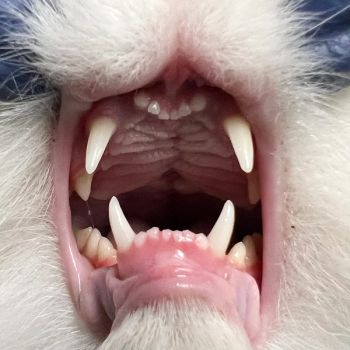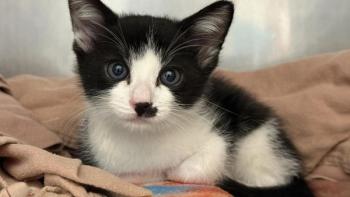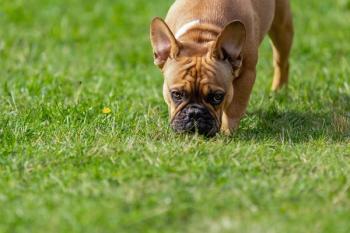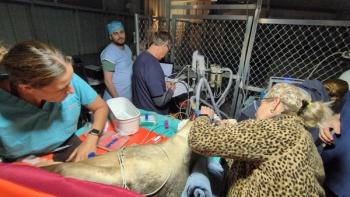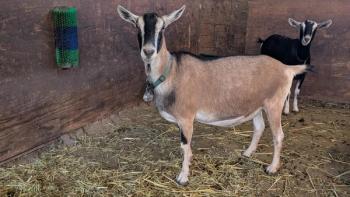
Surgery STAT: Pyloroplasty for gastric outflow emptying
A Y-U pyloroplasty is a great technique for treating this condition-when done with the utmost care and precision.
Getty Images
In patients with a partial gastric outflow obstruction, metoclopramide and cisapride may increase gastric contractions and emptying. But when medical management fails, surgically increasing the diameter of the pyloric lumen is indicated. The surgical options for treating gastric outflow obstruction include Fredet-Ramstedt, pyloromyotomy, Heineke-Mikulicz pyloroplasty and the preferred Y-U pyloroplasty.
However, if these procedures are performed incorrectly, they are difficult to correct. And the potential side effects from surgical complications can be costly. For example, the surgery may need to be repeated if the lumen is not opened enough or incisional dehiscence occurs, or additional therapy for areas of gastric necrosis will add to the expense and a patient's morbidity. Consider the following guidelines for performing a Y-U pyloroplasty with the utmost care and precision.
Master the fine points
As with any gastrointestinal surgery, packing off the area will limit contamination from spillage. Also, complete sponge counts should also be performed routinely.
Mentally draw and center the “Y” over the pylorus. All three arms should be equal in length. The base of the Y should appear along the ventral side of the pylorus toward the duodenum. The orad arms of the Y should course along the lesser and greater curvatures but stay just medial of large gastric vessels. These arms must diverge enough to avoid necrosis of the tip of the stomach flap but not too far apart as to cause excess damage to gastric vessels. Use full-thickness stay sutures throughout the procedure to minimize the handling of tissue edges with forceps.
Starting over the pylorus, make the first full-thickness incision with a No. 15 blade and extend it 1 to 2 cm, depending on the size of the animal. I prefer to start the incision with my blade but continue the cut with baby Metzenbaum scissors. If you are using curved scissors, make sure the natural angle of the blades does not draw the incision off midline. I place a 3-0 or 4-0 stay suture at the end or along this incision for better manipulation (Figure 1).
Figure 1: The base of the Y is aborad to the pylorus. Note the stay suture to help with surgical manipulation. (All surgical photos courtesy of Dr. Jennifer Wardlaw.)
Once you've made the base of the Y, create the first arm along the lesser curvature. The arm needs to be cranial enough to create a wide tongue of stomach wall but not too near the curvature to result in excess bleeding (Figures 2A and 2B). Using suction and stay sutures will help minimize spillage while the stomach is open.
Figure 2A: The first arm of the Y is started toward the lesser curvature.
Figure 2B: It continues until it is about the same length as the base of the Y (2B).
Make the final arm of the Y in a similar manner along the greater curvature (Figure 3). I use sometimes use a stay suture or a Babcock forceps to help provide tension on the stomach wall while making this final incision. This avoids jagged bites of tissue from the scissors due to tissue movement, creating a much cleaner line of closure once the procedure is finished.
Figure 3: The last arm of the “Y” is made along the greater curvature and is as long as the other two branches. Tension with either a stay suture or Babcock forceps (as pictured) will help avoid jagged edges and make this a smooth, controlled cut.
Finish strong
Start the closure of the Y-U with a simple interrupted suture, taking the point of the flap that has been created and connecting it to the base of the Y, aborad to the pylorus. This appositional suture helps ensure that the Y's arms are the right size, the diameter of the pylorus has been widened and the closure is symmetrical. If there is too sharp of a point at the end, trim this piece to allow for better apposition of the ends.
Once this full-thickness suture is in place, I prefer to close the stomach wall with a simple continuous suture pattern. Simple interrupted stitches can also be used, but the seal is not as watertight. Before the last few millimeters of the Y-U is closed, I insert my finger into the incision, through the pylorus, to ensure that there is not inverted mucosa blocking the lumen and that the lumen is wider than it was preoperatively. Then I finish closing the incision (Figure 4).
Figure 4: A closed Y-U with two stay sutures used intraoperatively to aid in manipulation and lumen palpation.
<
Finally remove the stay sutures (Figure 5). At this point, inspect the entire incision to ensure that no leakage can occur, that minimal mucosa is seen everting from the incision and that proper apposition has been achieved. Local lavage, abdominal lavage, sponge count and instrument changes should be performed to combat contamination. If biopsies are indicated or pyloric mucosal resection is necessary, the Y-U allows for this as well as widening the diameter of the pylorus.
Withhold food for 12 to 24 hours after surgery, and then introduce small, easily digested soft food. Small meals are recommended for at least 14 days.
Figure 5:The Y-U before abdominal wall closure. Note the wide base of the stomach portion of the pyloroplasty.
Newsletter
From exam room tips to practice management insights, get trusted veterinary news delivered straight to your inbox—subscribe to dvm360.


